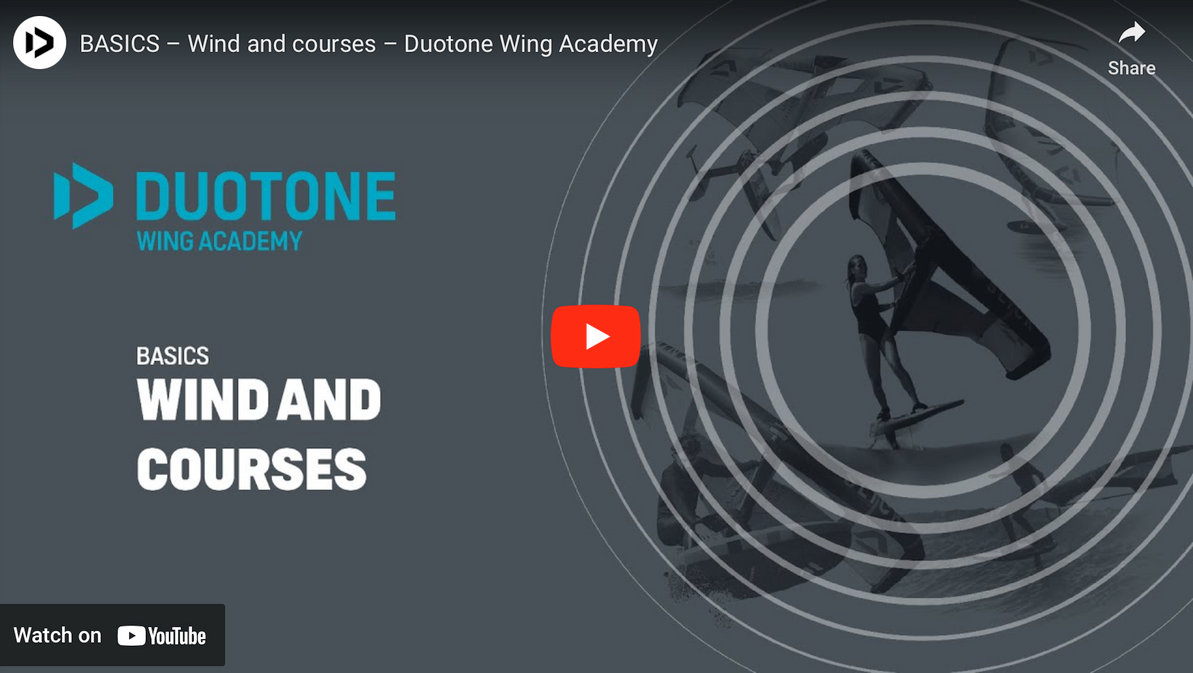Duotone Wing Academy | Wind and Courses
Wing foiling, one of the latest additions to the world of watersports, can be an exhilarating experience. Riding the waves with the wind as your guide, you'll soon realize that understanding and working with the wind is essential for progression. So, let's explore how to harness the wind wisely, ensuring a faster and safer wing foiling journey. We will delve into various wind-related terminologies and courses, and provide tips on how to start your ride, turn upwind, turn downwind, and reach higher speeds.
Understanding Wind Directions: Windward and Leeward
In all wind-related sports, including wing foiling, we use specific terms to denote which side is facing the wind and which is away from it. The windward side, also known as upwind, is the side facing the wind. On the contrary, the leeward side, or downwind, faces away from the wind. Understanding these wind directions is critical for effective navigation and control when wing foiling.
Proper Wing Placement and Carrying
When you're not riding, whether carrying your wing or placing it on the ground, ensure the leading edge (the front tube) faces into the wind. This positioning should ideally be at an angle of 90 degrees. Proper wing handling and placement minimize the risk of damage and provide a better setup for when you're ready to ride.
Starting your Wing Foiling Journey: The Beam Reach
As a beginner, your wing foiling journey should start with the beam reach or crosswind course, which means you ride at an angle of 90 degrees to the wind. This course offers a balanced approach to pressure and control, providing the best opportunity to get a feel for the wing and the board, thus promoting steady and safe progression.
Upwind Riding: Sheeting In
Going upwind, or riding at an angle towards the wind, requires more effort. You will need to sheet in more with your back hand, meaning you pull the sail closer to your body. This action results in generally more pressure on your wing. However, it's worth noting that riding directly into the wind is not possible when wing foiling. You can only go up to around 45 degrees into the wind.
Downwind Riding: Sheeting Out
On the other hand, when you ride at an angle with the wind, you're going downwind. Here, you need to sheet out, meaning the wing is open more than on the other courses, allowing you to effectively ride with the wind. Although going straight downwind is possible, it requires more wind speed than your travel speed to keep foiling and not lose power in your wing. For reaching the highest speeds, opt for a downwind course at an angle of up to around 45 degrees.
Wrapping Up: Key Takeaways from the Duotone Wing Academy
To summarize, mastering the wind in wing foiling involves understanding the concepts of windward and leeward, proper wing placement, and the optimal course of action for different wind directions. Here are the key takeaways:
- When carrying or placing your wing, the front tube should face into the wind.
- Always start to ride at an angle of 90 degrees to the wind.
- When turning upwind, sheet in.
- When turning downwind, sheet out.
Remember, the goal of wing foiling is not only to ride the waves but also to embrace the wind and use it to your advantage. As you venture out on your next wing foiling adventure, keep these principles in mind and enjoy your ride with the Duotone Wing Academy. Happy foiling!
Recent Posts
-
Kiteboarding | Crafting the Harlem Force Kite with Sustainability and Performance
Unparalleled Performance Meets Unmatched Sustainability The kiteboarding industry is on …24th Apr 2024 -
Duotone Ventis 2025 | What's New?
If you're familiar with Duotone's Ventis, you know its specialty is freeriding in light wind …23rd Apr 2024 -
Duotone Ventis D/LAB 2025 Overview
If you ride in an area with multiple light wind days and need a wing that'll let you get o …23rd Apr 2024




